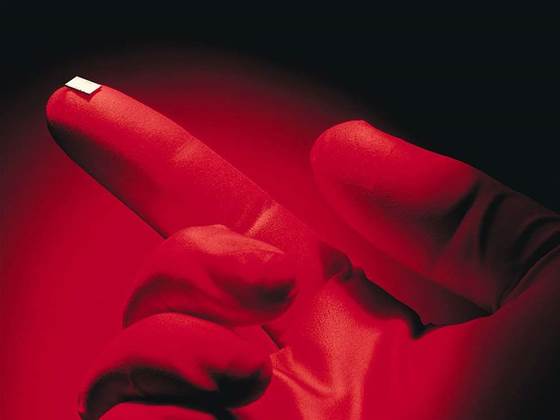
The "simple, low-cost" technique results in the self-formation of periodic lines, or gratings, separated by as little as 60nm, or less than one ten-thousandth of a millimetre.
Features of this size have many uses in optical, biological and electronic devices, including the alignment of liquid crystals in displays.
The new 'fracture-induced structuring' process starts when a thin polymer film is painted onto a rigid plate, such as a silicon wafer.
A second plate is then placed on top, creating a polymer 'sandwich' that is heated to ensure adhesion. Finally, the two plates are prised apart.
As the film fractures, it automatically breaks into two complementary sets of nanoscale gratings, one on each plate. The distance between the lines, called the period, is four times the film thickness.
"It is like magic," said electrical engineer Stephen Chou, the Joseph C. Elgin Professor of Engineering at Princeton. "This is a fundamentally different way of making nano-patterns."
The ease of creating the lines is in marked contrast to traditional fabrication methods, which typically use a beam of electrons, ions or a mechanical tip to 'draw' the lines into a surface.
The fracture-induced structuring technique is not only simple and fast, but enables patterning over a much larger area.
The researchers have already created gratings over several square centimetres, and the patterning of much large areas should be possible with further optimisation of the technique.
"It is remarkable, and counterintuitive, that fracturing creates these regular patterns," said William Russel, a chemical engineering professor and dean of Princeton's graduate school.
Russel and graduate student Leonard Pease III teamed with Chou and graduate students Paru Deshpande and Ying Wang to develop the technique.
A patent application has been filed on the process, which the researchers say is economically feasible for large-scale use in industry.
The researchers will publish their findings in the online version of Nature Nanotechnology.


_(20).jpg&h=140&w=231&c=1&s=0)





_(26).jpg&w=100&c=1&s=0)

 iTnews Executive Retreat - Security Leaders Edition
iTnews Executive Retreat - Security Leaders Edition









_(1).jpg&h=140&w=231&c=1&s=0)



